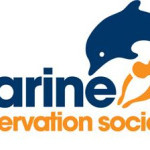- Industria: Earth science
- Number of terms: 10770
- Number of blossaries: 1
- Company Profile:
The UK charity dedicated to the protection of the marine environment and its wildlife.
A point on a chart of cotidal lines from which the cotidal lines radiate.
Industry:Earth science
A new technique for visualising and measuring small density variations by digitally recording variations in an image observed through a stratified fluid.
Industry:Earth science
1. An ideal emitter that radiates energy at the maximum possible rate per unit area at each wavelength for any given temperature. A blackbody also absorbs all the radiant energy in the near visible spectrum incident upon it. No actual substance behaves as a true blackbody, although platinum black and other soots rather closely approximate this ideal. However, one does speak of a blackbody with respect to a particular wavelength interval. This concept is fundamental to all the radiation laws, and is to be compared with the similarly idealized concepts of the whitebody and the graybody. In accordance with Kirchhoff's law, a blackbody not only absorbs all wavelengths but emits at all wavelengths and does so with maximum possible intensity for any given temperature.
2. A laboratory device that simulates the characteristics of a blackbody. See blackbody radiator.
Industry:Earth science
A measure of the quantity of dissolved salts in sea water. It is formally defined as the total amount of dissolved solids in sea water in parts per thousand ((s)) by weight when all the carbonate has been converted to oxide, the bromide and iodide to chloride, and all organic matter is completely oxidized. These qualifications result from the chemical difficulty in drying in salts in sea water. In practice, salinity is not determined directly but is computed from chlorinity, electrical conductivity, refractive index, or some other property whose relationship to salinity is well established. The relationship between chlorinity Cl and salinity S as set forth in ( Knudsen ) 's tables isIFI. In 1940, however, (Lyman) and (Fleming) found that the relationship between total dissolved salts (s) and chlorinity was better expressed by IFI.
Industry:Earth science
1. The process of transport of an atmospheric property solely by the mass motion of the atmosphere; also, the rate of change of the value of the advected property at a given point.
2. Regarding the general distinction (in meteorology) between advection and convection, the former describes the predominantly horizontal, large-scale motions of the atmosphere whereas convection describes the predominantly vertical, locally induced motions.
3. To transport or carry. In air quality, the rate at which particulate matter is transported.
Industry:Earth science
A body of seawater that does have some access to the open ocean. The Gulf of Mexico is an example of a semienclosed basin.
Industry:Earth science
A wave that propagates in density stratified fluid under the influence of buoyancy forces. Internal gravity waves are also called internal waves and gravity waves. The dispersion relation is given by frequency \omega = +/- N k_h/
Industry:Earth science
A graph with temperature as ordinate and salinity as abscissa, on which the points observed at a single oceanographic serial station are joined by a curve (the T-S curve ).
Industry:Earth science
A theoretical boundary between a region in the fluid where waves of some frequency are propagating and a region in the fluid where waves of the same frequency do not propagate (where they are evanescent). This is also called a critical level but is distinct from the critical level where the background flow has the same speed as the phase speed of the waves.
Industry:Earth science
